All issues

Volume 38 (2011)
- Issue 2 Pages 105-
- Issue 1 Pages 1-
Volume 38, Issue 2
Displaying 1-6 of 6 articles from this issue
- |<
- <
- 1
- >
- >|
-
Kazue YAMAOKA2011Volume 38Issue 2 Pages 105-106
Published: 2011
Released on J-STAGE: February 01, 2012
JOURNAL FREE ACCESSDownload PDF (190K) -
Mariko WATANABE, Kazue YAMAOKA, Toshiro TANGO2011Volume 38Issue 2 Pages 107-116
Published: 2011
Released on J-STAGE: February 01, 2012
JOURNAL FREE ACCESSIn order to develop Evidence Based Nutrition (EBN), it is important to conduct a reliable assessment of dietary intake and to examine the effectiveness of dietary education through a randomized controlled trial.
This paper mainly describes two important issues. The one is the assessment of the validity and reproducibility of a self-administered food frequency questionnaire as a tool for assessing appropriate dietary intake. Another is the approach for examining the effectiveness of dietary education for a practical nutrition education study based on EBN. Through the empirical studies, we suggest the importance of promoting effective nutrition education method based on the scientific basis.View full abstractDownload PDF (568K) -
:Trial of the Evaluation for Nutritional Education with Behaviormetric ApproachMisa ADACHI, Yasuko TERASAWA, Nobuko KANEKO, Kazue YAMAOKA2011Volume 38Issue 2 Pages 117-125
Published: 2011
Released on J-STAGE: February 01, 2012
JOURNAL FREE ACCESSTo provide effective nutrition education for improving behavioral change on subject's lifestyle, type specific education may be effective. The aim of the study is to classify the subjects into several types based on their behavioral pattern. In total, 270 outpatients in clinics who underwent nutrition counseling were the subjects of this study. The assessment questionnaire consists of 14 items including questions of awareness of their illness, willingness to change their lifestyle. Hayashi's quantification method 3 was used (Q3) to examine the response pattern. As a result, the outpatients were classified into four types based on the analysis by Q3 and we proposed an approach corresponding to each type. Possibility to classify the patients into the four types with less items was examined by correlation coefficients. Short version of assessment using four items was suggested to be practically useful. The adequate approach for each type is expected to increase the effectiveness of nutrition education compared to the conventional nutrition education that is based on nutritionist own experience. Further study is needed to examine the effectiveness of this method.View full abstractDownload PDF (489K) -
Yasuko TERASAWA, Misa ADACHI, Nobuko KANEKO2011Volume 38Issue 2 Pages 127-134
Published: 2011
Released on J-STAGE: February 01, 2012
JOURNAL FREE ACCESSIn this report, we show the process, the feature, and the outline of the personalized health education program based on a behavior metrics approach. According to the program, we conducted the health education for 6 months for the subjects of specific health guidance for “motivational support” and “active support”. The changes from baseline of weight, waist circumference, consciousness and behavior were examined including a trial to perform Adachi's Type Specific Education. From the results, feasibility of the type specific education was suggested. In the discussion, issues for further study was discussed.View full abstractDownload PDF (390K) -
Etsuko NAKADA, Minoru Haruhiko, Tomohiro TSUJI, Masami ISHIHARA, Miho ...2011Volume 38Issue 2 Pages 135-141
Published: 2011
Released on J-STAGE: February 01, 2012
JOURNAL FREE ACCESSIn this report, we analyzed the effectiveness of our measure in streamlining national registered dietitians' work process in a nutritional support team (NST). After introducing the measure to improve the identification of various oral nutritional supplements (ONS), the occupancy rate of ONS explanation by dieticians' work process during NST inspection was reduced from 22.2% to 5.5%. Furthermore, the average monthly prescription of ONS to patients increased.
This measure not only streamlined dieticians' work process but also encouraged the nurses to participate in nutritional management.View full abstractDownload PDF (866K)
-
[in Japanese]2011Volume 38Issue 2 Pages 143-144
Published: 2011
Released on J-STAGE: February 01, 2012
JOURNAL FREE ACCESSDownload PDF (247K)
- |<
- <
- 1
- >
- >|